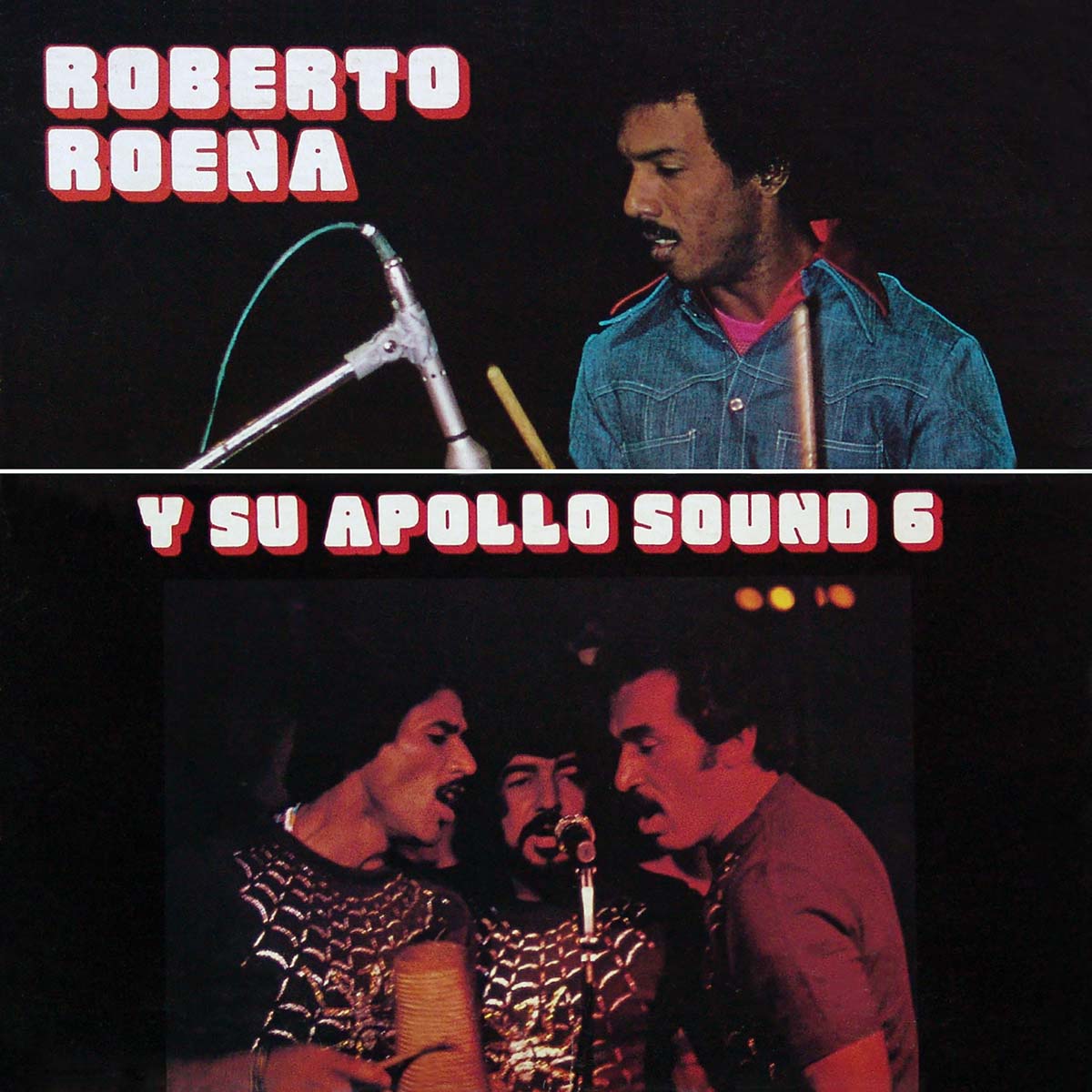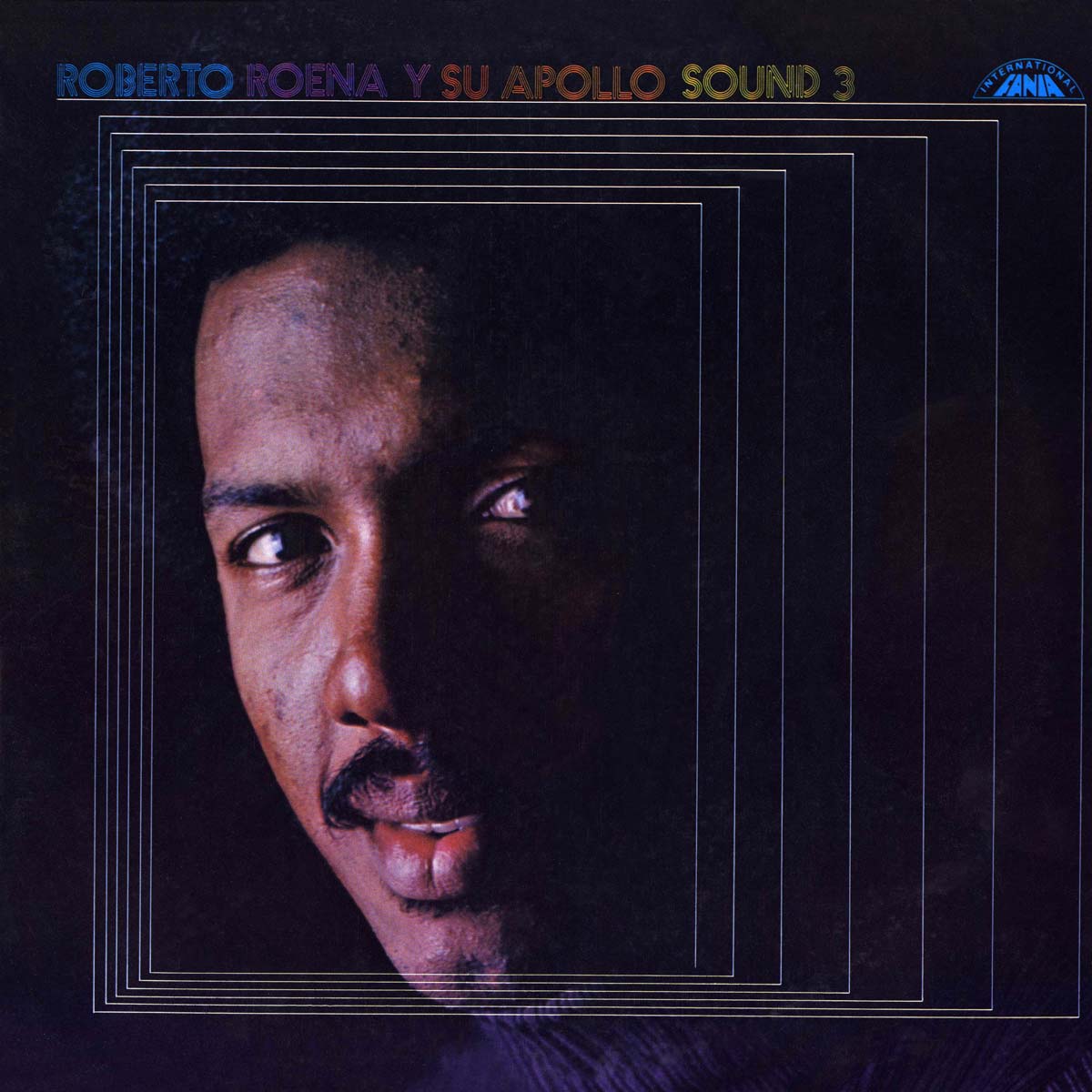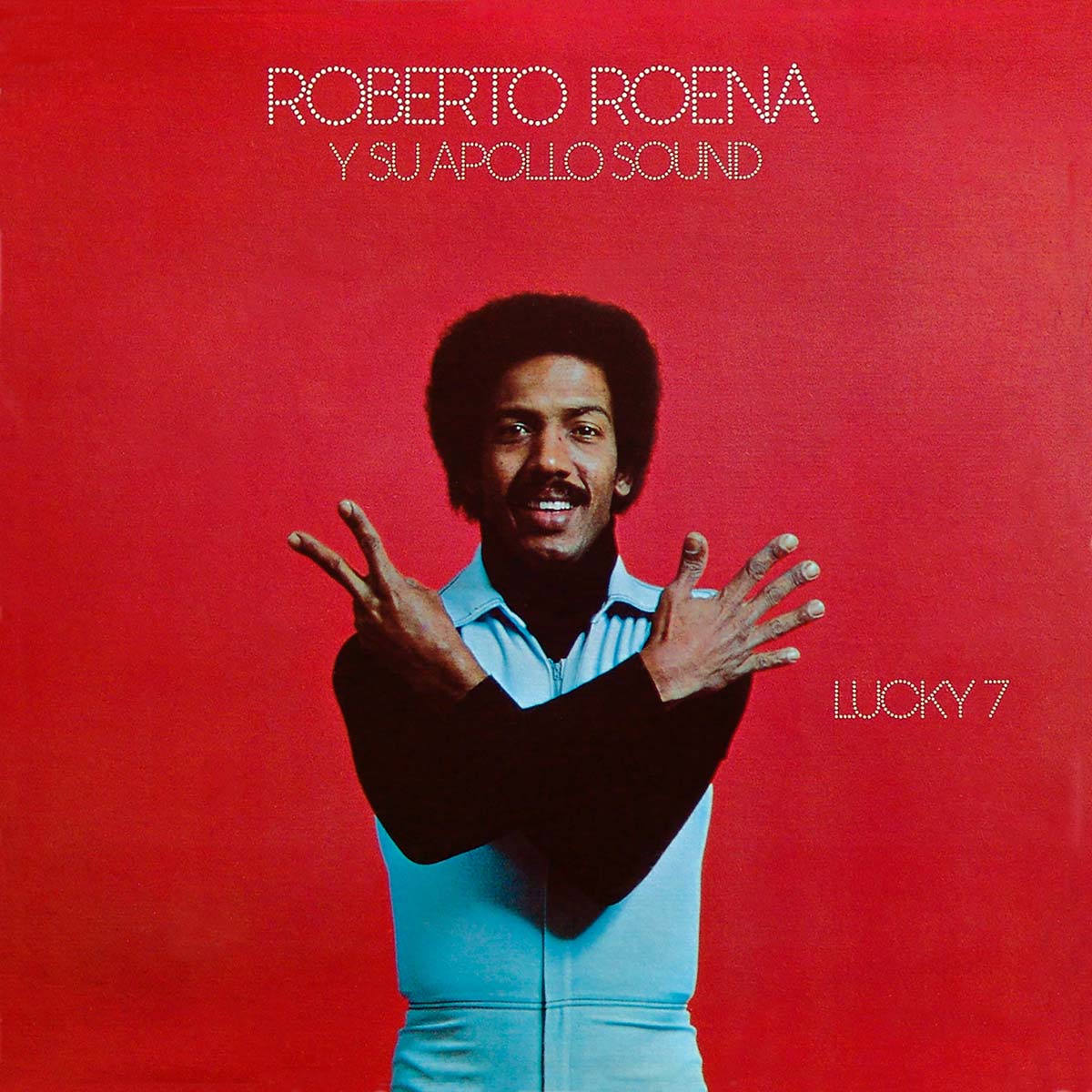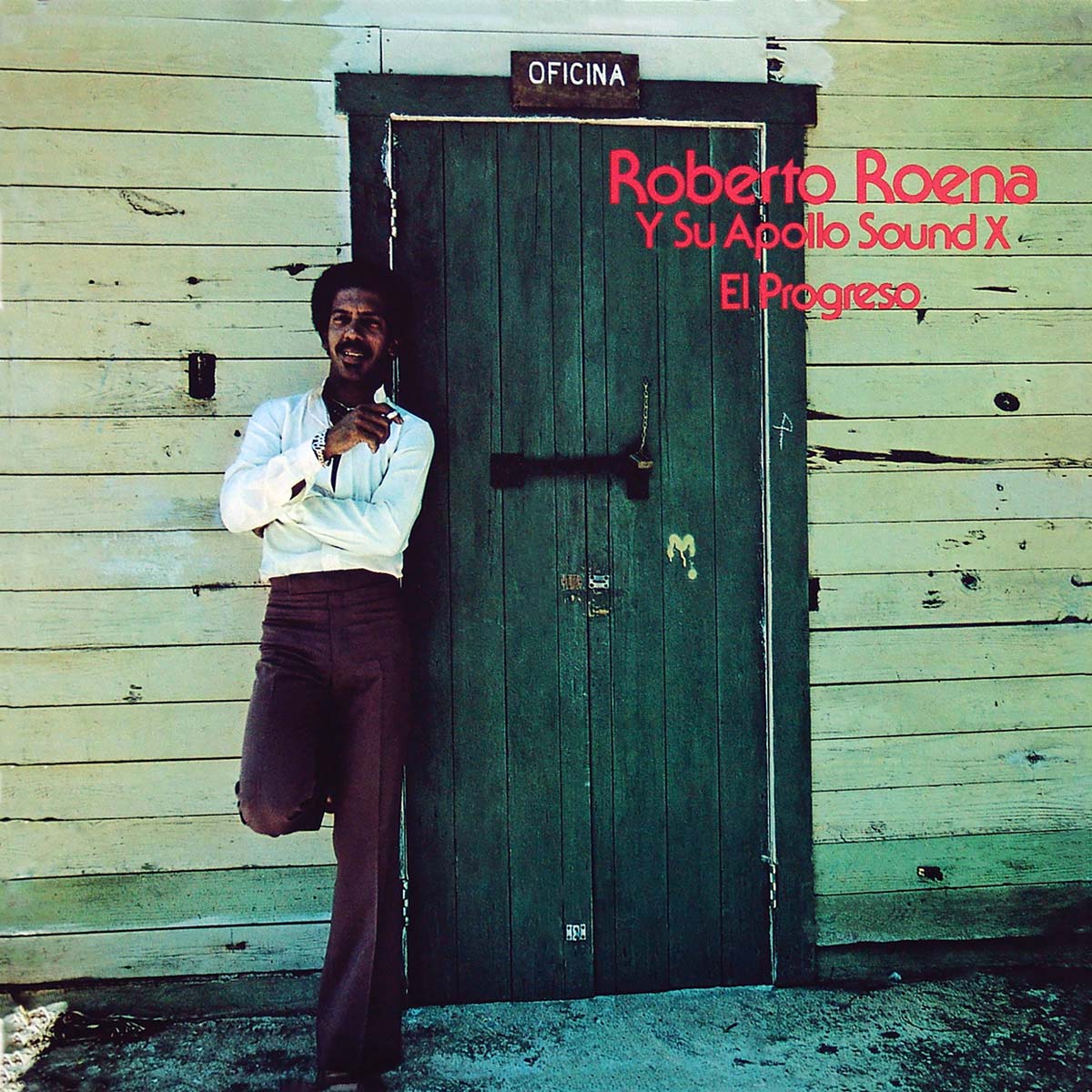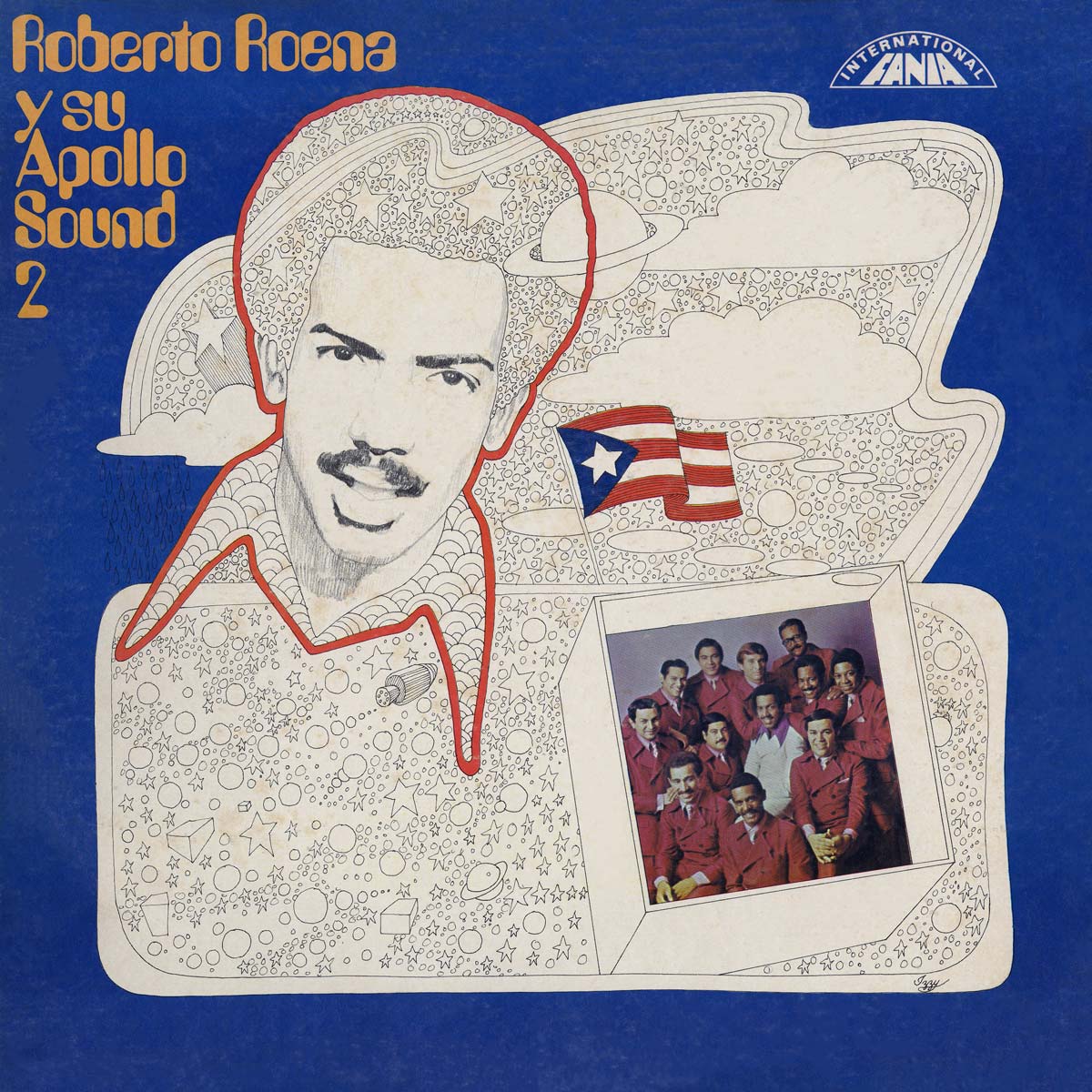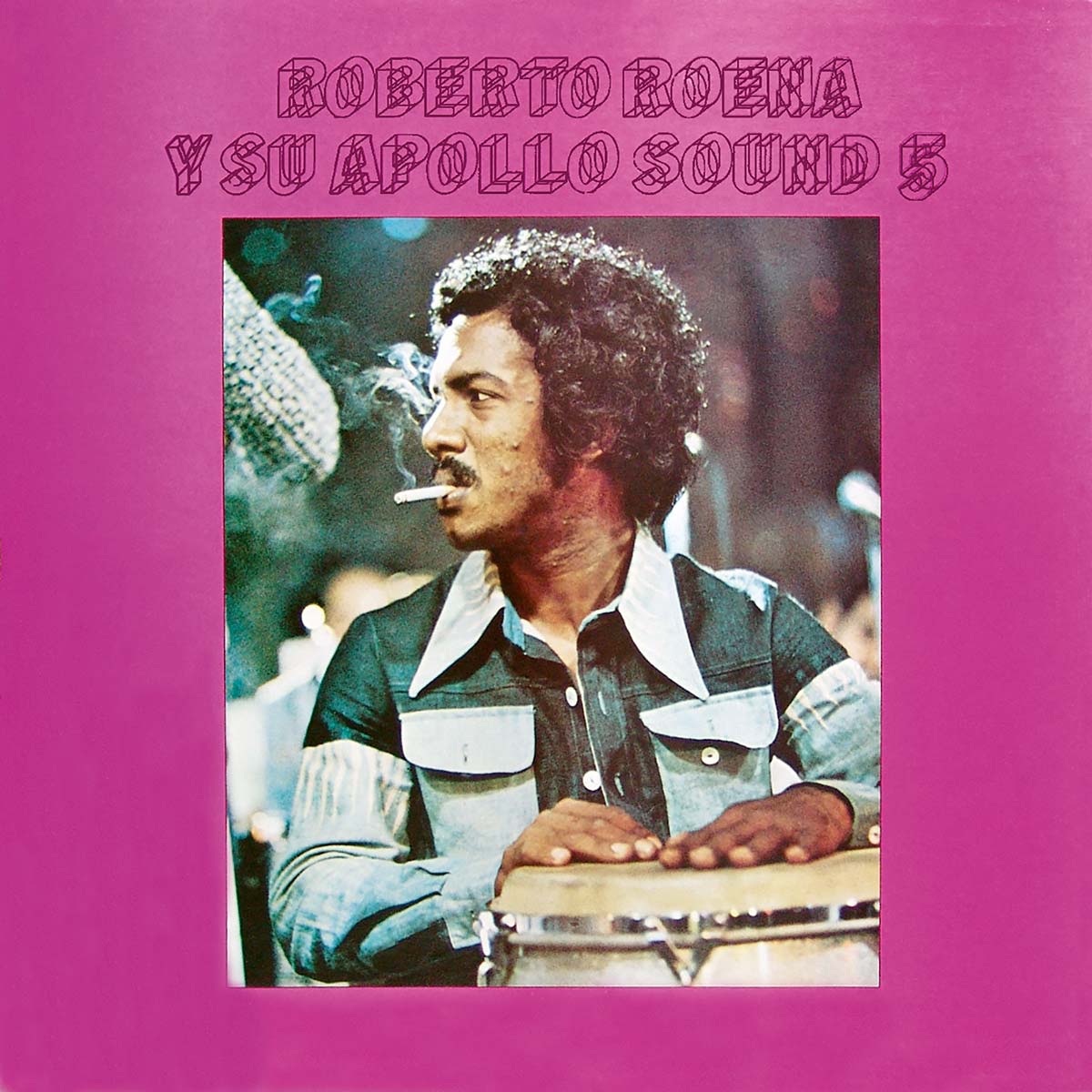
Roberto Roena Roberto Roena Y Su Apollo Sound 5 (Fania 443), Released 1973 Roberto Roena: Salsa Sophisticate One of salsa’s preeminent bandleaders for four decades and one of the genre’s premier bongo players, Roberto Roena Vázquez was born in the barrio of Dulces Labios in Mayagüez, Puerto Rico, on January, 16 1940.
Though he started as a dancer, and was later dubbed El Gran Bailarín (The Great Dancer), he developed parallel skills as a percussionist. He got his big break in the mid-1950’s when Rafael Cortijo recruited him to his legendary Combo. When pianist Rafael Ithier led a defection of sidemen from Cortijo’s Combo in 1962 to become the basis of El Gran Combo, Roena stayed with Cortijo for a while and gained the valuable experience of witnessing him regroup before he departed for New York. After a brief stint with the orchestra of Mario Ortiz, Roena was invited to replace El Gran Combo’s departing bongosero and remained with the band until 1969. During his tenure with Gran Combo he appeared on Kako’s classic Latin jam outing Puerto Rican All-Stars Featuring Kako on Alegre Records, recorded in 1963 and the1967 hit Los Mejores Músicos de Puerto Rico on Gema Records, directed and arranged by Ray Santos. In 1966, Roena made his recording debut as leader with a band called Megatones on Se Pone Bueno/It Gets Better on Alegre Records. Roena signed with Fania International (later called International Records), a division of Jerry Masucci and Johnny Pacheco’s Fania Records, and debuted with his band Apollo Sound on Roberto Roena y Su Apollo Sound in 1969. From the outset, Apollo Sound featured a line-up of two trumpets, trombone, tenor saxophone (doubling on flute), rhythm section (bongo, conga, timbales, bass, piano) and voices (lead and chorus).
A third trumpet was added in the mid-1970’s and this frontline combination was retained until the 1990’s, when he started recording with an expanded brass section. While preserving their rhythmic integrity, Roena and Apollo Sound developed into one of salsa’s more progressive and sophisticated outfits with their own highly distinctive style. To help achieve and maintain this, Roena has hired some of Puerto Rico’s most creative arrangers over the years, including Bobby Valentín, Elías Lopés, Ray Santos, Ray Coen, Mario Ortiz, Jorge Millet, Julio “Gunda” Merced, Luis “Perico” Ortiz, Papo Lucca, Louis García, Tito Rivera and Humberto Ramírez. For the 1973 Roberto Roena y Su Apollo Sound 5, regarded as one of the band’s very best songs, they were joined by singer Sammy González, a former Tommy Olivencia band member, trombonist Julio “Gunda” Merced and innovative pianist/arranger Jorge Millet. An alumnus of Cortijo y Su Bonche, Millet handled the lion’s share of the arrangements on the album. The opening track, Cui Cui, became a monster hit and has become an obligatory inclusion in Roena retrospectives. Millet’s chart for Que Se Sepa infuses a funky quality that along with Apollo Sound’s powerful execution made the tune hip again in the 21st century with the Latin boogaloo/soul/funk/jazz revival movement. Popular with the same crowd is the explosive descarga, Ponte Duro, penned by Johnny Pacheco, where for nearly nine and half minutes, solo upon solo build to a climax of blasting horns.
Roena kicks-off with a bongo solo, followed by solos from trombonist Gunda Merced, Miguel Rodríguez on saxophone and trumpeters Mario Cora and Dario Morales; then Roena returns succeeded by Julito Morales on timbales and Papo Clemente on conga. Roena had previously recorded Ponte Duro with the Fania All Stars at New York’s Cheetah club in 1971, which appears on their album Live At The Cheetah Vol. 2. He made his album debut with the Fania All Stars on the previous Cheetah volume and continued to record with band into the 1990’s. Aquellos Que Dicen, written by the great Puerto Rican composer Catalino “Tite” Curet Alonso, is given an inventive arrangement by Millet and features a solo by timbalero Julito Morales. An un-credited Adalberto Santiago can be heard singing in the chorus. Also un-credited is Yomo Toro, who takes a tres guitar solo on the laidback son montuno, La Marunga. Only two charts were farmed out to other arrangers, the bolero, Solo Contigo Basta, arranged by Elías Lopés, and the hard and swinging Avísale A Mi Contrario, given a distinctive arrangement by Mario Ortiz. Rounding-off the album’s varied diet are the funky bomba Oriza Eh, merengue Asunción and Como Tu No Hay Nadie, another bolero. Roena continued to record as a leader with the Fania family up to 1982, making albums for the Pa’lante, Up and Sonostar labels before signing with Tony Moreno’s Musical Productions.
Musicians: Mario Cora – 2nd Trumpet Dario Morales – 1st Trumpet Miguel Rodriguez – Tenor Sax & Flute Gunda Merced – Trombone Jorge Millet – Piano Jappy Castro – Bass Papo Clemente – Conga Julito Morales – Timbales Tito Cruz – Vocals Sammy Gonzalez – Vocals Frankie Calderon – Vocals Roberto Roena – Leader Produced by: Roberto Roena Recording Director: Jon Fausty Arranged by: Jorge Millet, except “Avisale A Mi Contrario” by Mario Ortiz and “Solo Contigo Basta” by Elias Lopes. Recorded at: Good Vibrations Sound Studios Engineer: Jon Fausty Photography: Jose Florez Album Design by: W2 Graphic Designs, Inc./Walter Velez/Izzy Sanabria
Written by John Child


